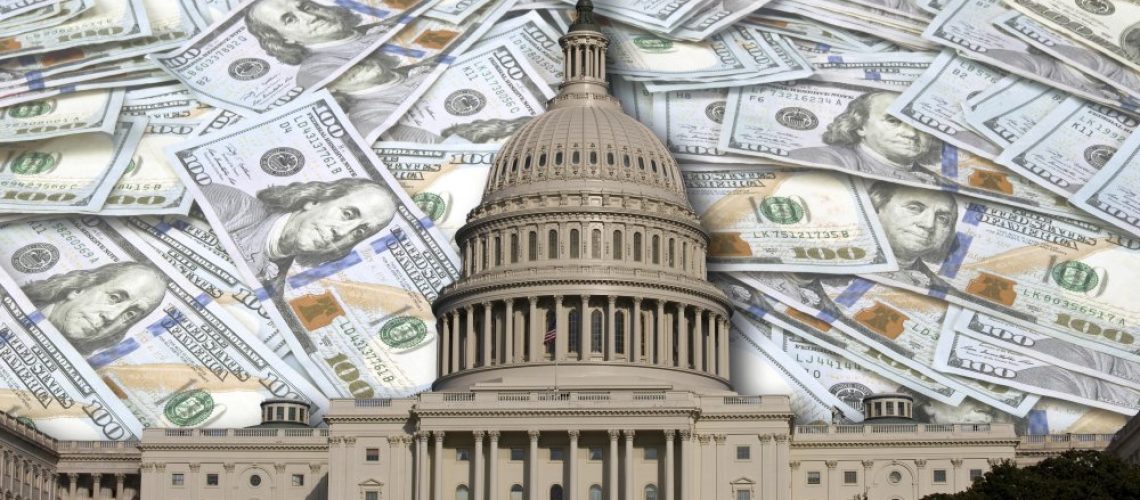The reconciliation budget bill currently under consideration in the U.S. House of Representatives could short circuit economic gains from the renewable energy industry.
The so-called “big, beautiful bill” contains the bulk of President Donald Trump’s legislative agenda, but the megabill also includes major cuts to renewable energy. As currently constructed, the legislation claws back funding from the 2022 Inflation Reduction Act and repeals clean energy tax credits that have boosted domestic solar development and manufacturing for the past three years.
The renewable power manufacturing sector currently contributes $18 billion to U.S. GDP annually, spurs $33 billion in domestic spending annually, and supports 122,000 jobs across the United States, according to the American Clean Power Association (ACP). Renewable power manufacturing is projected to support more than 575,000 jobs and contribute $86 billion annually to GDP by 2030, if all announced manufacturing facilities become operational in the United States.
However, that could all be in jeopardy with the passage of the reconciliation budget bill.
Big, beautiful bill warning from SEIA
Without changes, industry advocates say that the bill could eliminate nearly 300 U.S. solar and storage factories being built and lead to the loss of 145,000 GWh of solar generation by 2030, according to the Solar Energy Industries Association (SEIA). The bill could result in the loss of nearly 300,000 current and future U.S. jobs, including 86,000 in solar manufacturing.
New analysis released by the SEIA warns that the budget bill, if enacted, could trigger an immediate decline in solar and storage investments. By 2030, up to $220 billion in investment could be lost.
Roughly 80% of all at-risk factories, jobs, and investments in the solar manufacturing sector are in states that voted for Trump.
“There is still time to improve this bill which, as written, represents a crisis for America’s ability to build the energy infrastructure we need to meet surging demand,” said SEIA president and CEO Abigail Ross Hopper. “If this proposal becomes law, nearly 300 U.S. factories, mostly in red states, could close or never open, and we simply won’t have the energy we need to power American innovation in AI and data centers.”
The United States needs to add 206.5 GW of new energy capacity by 2030, with solar expected to supply 73% of those capacity additions. Without solar and storage, the United States will have an energy shortage that raises utility bills and slows economic growth, according to SEIA.
The budget bill would also repeal the Section 25D residential tax credit, a key driver of energy freedom for middle-class families. Repealing it leaves households with no accessible path to lower their costs with solar.
“Passing this bill would create a catastrophic energy shortfall, cede AI and tech leadership to China, and damage some of the most vital sectors of the U.S. economy,” Hopper added. “But the story isn’t over. The Senate has the opportunity to put forward a more thoughtful and measured proposal that achieves President Trump’s American energy dominance vision.”
State of Clean Energy Manufacturing
According to the ACP’s newly released State of Clean Energy Manufacturing in America report, the renewable industry has laid the groundwork for a secure domestic supply chain, revitalizing manufacturing communities and driving U.S. competition on the global stage.
“Surging clean energy deployment is creating new manufacturing facilities across the country. This success will create hundreds of thousands of jobs and revitalize American communities if policy leaders place economic progress over partisan division,” said Jason Grumet, CEO of ACP. “Today’s report shows that the manufacturing activities across the clean energy sector drive a ripple effect of economic growth that extends far beyond factory walls, reaching every corner of the country. Reshoring this critical supply chain requires a shared commitment by both industry and policymakers to prioritize domestic economic growth and global competitiveness.”
The ACP report shows that more than 800 manufacturing plants are currently contributing to the U.S. renewable energy supply chain, with at least one in every state. Meanwhile, 200 existing manufacturing facilities are actively building primary renewable power components across 38 states to supply the booming demand for new energy in the United States.
With 200 renewable power manufacturing facilities in the pipeline, representing more than $150 billion in investment, the ACP report shows that if all announced facilities become operational by 2030, renewable power manufacturing could support more than 575,000 jobs, generate more than $40 billion in earnings, contribute $86 billion to the GDP, and add $164 billion in output to the economy annually.
The ACP report details how these economic and job benefits have largely been made possible because of federal clean energy tax credits enacted in 2022. The report calls on policymakers to build on this historic U.S. manufacturing legacy with a suite of targeted policy tools to continue the momentum. They include:
- Preserving energy tax credits (45X, 45Y, 48C, 48E).
- Creating a stable and strategic trade environment.
- Facilitating a true all-of-the above energy strategy.
- Streamlining permitting to benefit U.S. manufacturers and their customers.
- Ensuring critical minerals policy appropriately leverages demand from downstream domestic clean energy manufacturers.
The House reconciliation budget bill is expected to be considered by the House Rules Committee on Wednesday, where policymakers will discuss how the bill will be debated on the floor.
Tags: policy, tax credit



